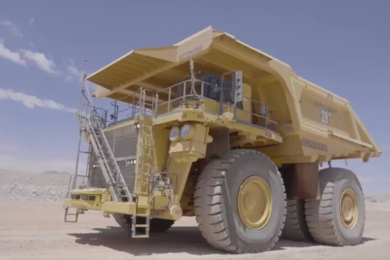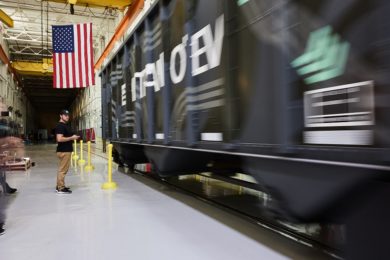At the recent Exponor 2022 show in Antofagasta, Chile, BHP presented the autonomy projects that it is advancing in its two main copper operations in Chile, Escondida and Spence. These contemplate, in total, the incorporation of 85 autonomous trucks and 11 remotely operated drilling rigs, which will represent the largest fleet with this technology so far in South America. It was announced by the Director of the BHP Autonomy Program, Pedro Hidalgo.
Spence already has five fully operational autonomous drills and has begun work to convert or replace 33 trucks in its fleet, which BHP has previously said are Komatsu units. The first of them is expected to operate in January 2023. For its part, Escondida currently has six drilling rigs in operation, in addition to four autonomous trucks, the latter authorised to operate until 2023. In parallel, it is developing studies to gradually incorporate 52 trucks with autonomous technology to 2025.
The statement did not name the autonomous trucks at Escondida but the company recently released a video after completion in Q3 2021 of its initial Escondida Autonomous Truck Pilot (EATP) which lasted a year in the mine’s Zona Norte 10 and saw 15 Mt of material successfully moved with autonomous Komatsu 930E trucks equipped with FrontRunner technology and using the Modular Mining DISPATCH system.
“Autonomy is not something new in the mining industry. In Australia, various BHP operations have already made this transition towards autonomy and through this experience we have verified the opportunities that this transformation offers in terms of safety, competitiveness and also in the professional development of people,” said Hidalgo.
For his part, the Vice President of Corporate Affairs of BHP, René Muga, assured that “this technological transformation is part of our journey towards the mining of the future or mining 4.0, a way of doing mining that also seeks to be more compatible with the environment and connected with communities. We want everyone – workers, the community and suppliers – to feel called to be part of the future of the industry.”
“A key aspect is to develop the skills of the future to meet the demand for human capital that the region will require by 2030. To achieve this , we must work in collaboration with all the actors of the educational ecosystem of the region,” he indicated.










